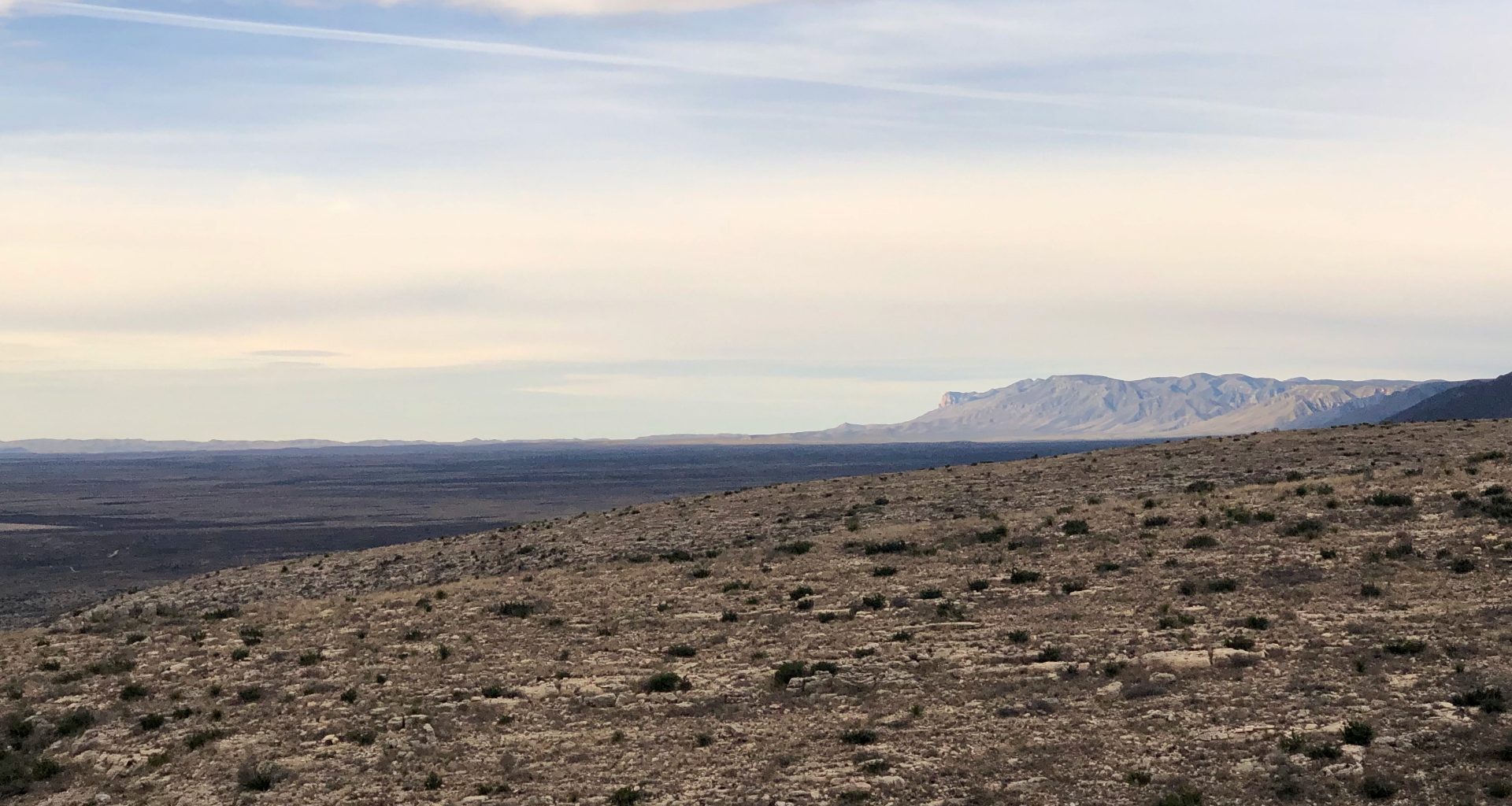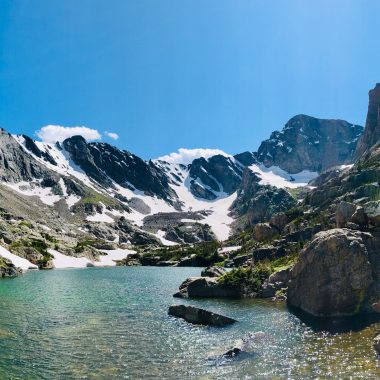Things are not always what they seem. Look closely at the limestone cliffs here at Guadalupe Mountains National Park and something quite unexpected appears. Fossilized shells, ancient algae imprinted in the rock, and horn coral fossils all testify that the Guadalupe Mountains are no ordinary mountains. Indeed, during the Permian Period, over 260 million years ago, this was the northern edge of Capitan Reef in the Permian Basin, an inland sea that once covered this part of West Texas. Buried for millions of years after the Permian Basin dried up, Capitan Reef rose up as tectonic shifts lifted the underlying fault here over two miles above sea level– creating the Guadalupe Mountains and exposing the ancient reef once again.

Guadalupe Mountains National Park is located in far west Texas, just about two hours drive directly east of El Paso. No matter which direction you come from, the Guadalupe Mountains announce themselves long before you arrive. The range includes Texas’s four highest peaks, rising over 8000 feet above the surrounding Chihuahuan Desert. El Capitan, the southern most prominence in the range, was once used as a landmark for overland travelers heading west to California. You can still see the remnants of a stagecoach stop called the Pinery, which was built here for the Butterfield Overland Mail in the late 1850’s.
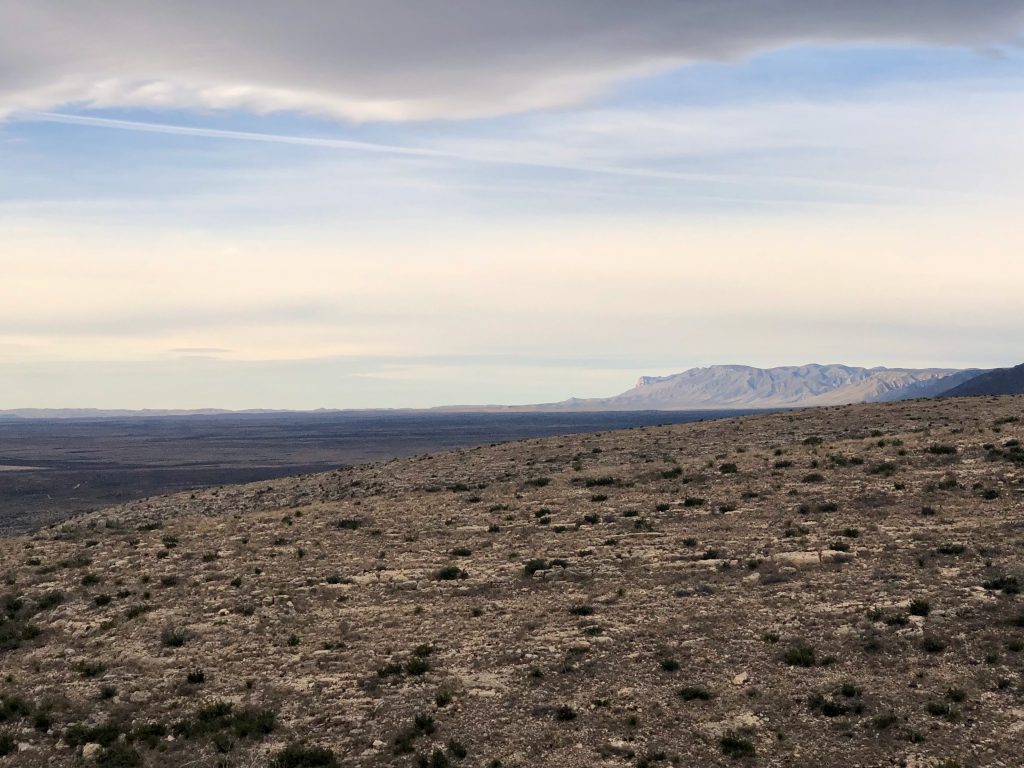
Exploring the Park
Once in the park, there are a number of things to explore. You can stop by the main visitor center and learn about the geology and fossils of Capitan Reef. There are over 80 miles of trails in the park, including an 8+ mile hike up to the top of Guadalupe Mountain. You can also visit Williams Ranch, one of a handful of old ranching sites that used to occupy the area. There is also an excellent nature trail at the Visitor’s Center which provides a detailed overview of the area’s desert plant life and flora.
Devil’s Hall
With tired legs from the previous day’s hike through the dunes at White Sands National Monument— I decided not to do the long 6-8 hour Guadalupe Peak hike and instead did the shorter 3.8 mile Devil’s Hall hike. Devil’s Hall trail follows Pine Spring Canyon below Guadalupe Peak, traversing a long wash with large boulders and a steep natural stone staircase. After about two miles you reach the namesake Devil’s Hall, a beautiful narrow slot canyon at the end of the trail.

A quarter mile or so before you reach Devil’s Hall there is a section called Hiker’s Staircase. You have to scramble up and over a tall twelve foot drop in the staircase. This requires hugging the smooth rock wall of the wash and stair stepping your way up and over the drop. This section might be daunting for small kids, so keep that in mind if you’re traveling with children.
Once over Hiker’s Staircase, you’re just a short, flat walk to the highlight of this trail, Devil’s Hall. Devil’s Hall is a stunning slot canyon with sheer walls of layered limestone rock climbing over 100 feet high on either side.
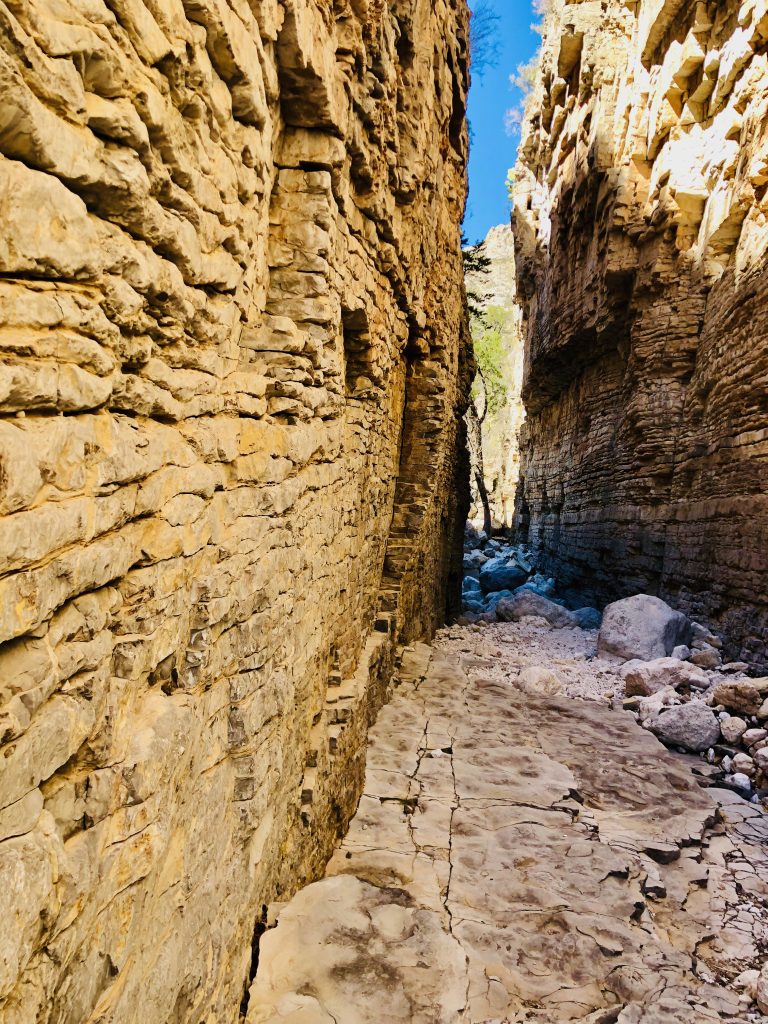
Once you reach Devil’s Hall, there are a few lovely Maple trees that provide nice shady spots to cool off in before you head back down the trail the way you came. Plan for about 2-3 hours total hike time. Make sure to take time to give the rocks a close look on the way up. You never know what ancient life forms you might see! Just don’t touch, the fines are severe here for disturbing any of the fossils.
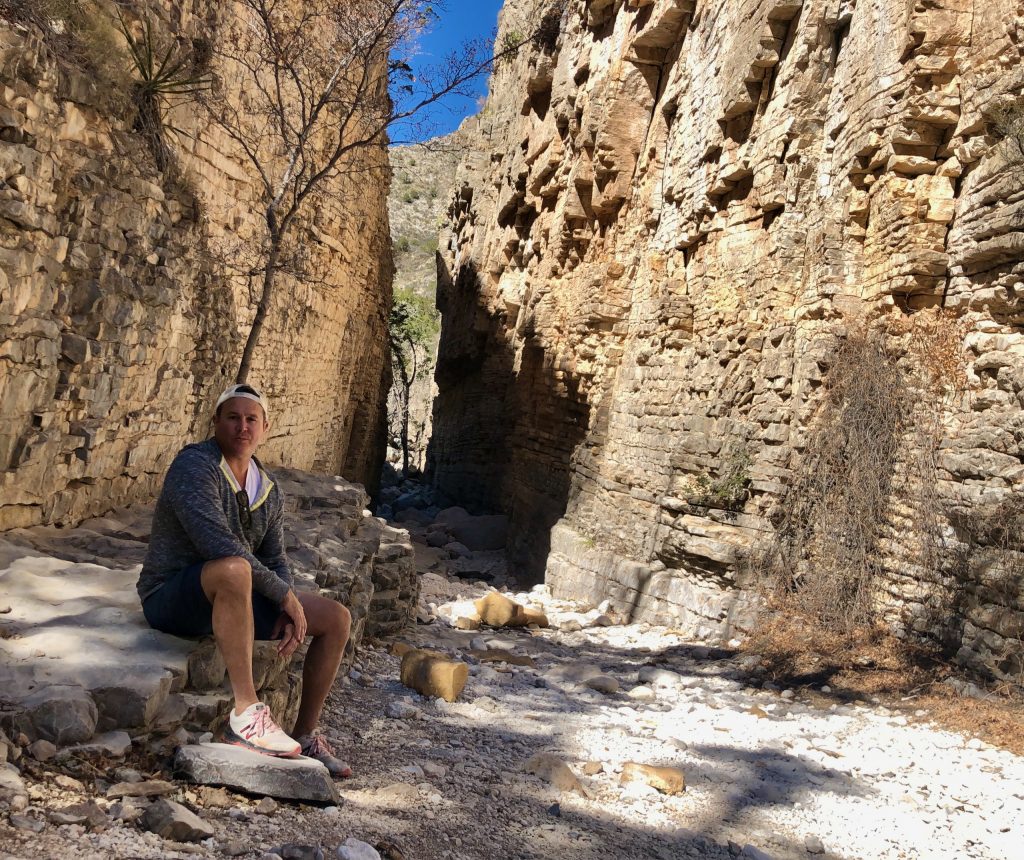
If you love learning about geological history, Guadalupe Mountains National Park provides an exceptional experience. It literally immerses you in the world’s most extensive Permian Fossil reef while also providing a beautiful outdoor escape. Carlsbad Caverns National Park is less than an hour away, giving you the opportunity to go deep beneath the surface of the limestone layers that permeate this area. I highly recommend doing both parks back to back for an extraordinary West Texas and New Mexico adventure!
